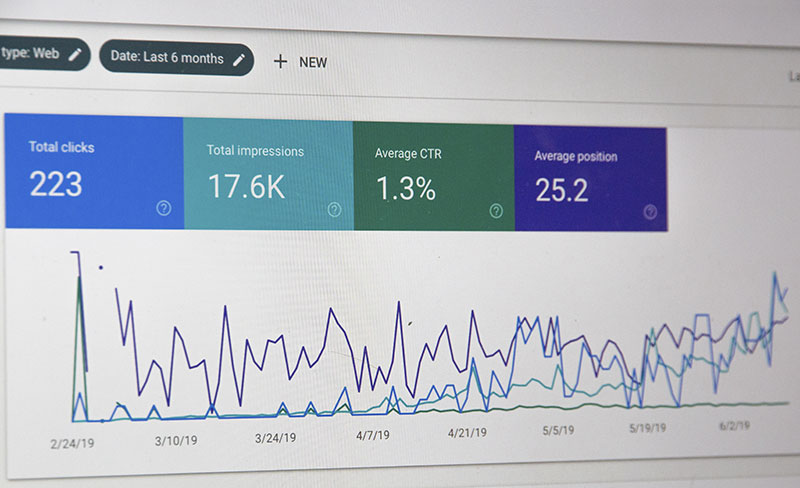
In recent years, Fintech has played a game-changer role in how financial institutions operate and disrupt many business verticals. Although fintech improves many aspects of finance and brings a seamless and unique user experience, there are still major fintech challenges facing the industry. These challenges that need to be addressed are:
- Increasing cybersecurity risks
- Regulatory Issues for Fintech Companies
- Lack of trust
- High rate of technological disruption
- Needs for large investments in IT and Marketing
- High demands for technological capabilities
- High demands for personalized experience
- Lack of human touch
1. Increasing cybersecurity risks
Financial operations handle a great deal of information every day, of both customers and businesses. Back in the day, the information are can be stored on papers and records, but in recent years, more data is available in digital formats.
On one hand, this is an advantage for both users and the financial institutions, as it is easier to analyze and generate insights, and faster in transactions. But on the other hand, digital data is stored in a digital environment, making the data more vulnerable to security breaches than ever.

Fintech challenges – Cybersecurity threats
Cybersecurity risks such as data breaches or malware attacks can result in severe consequences. Names and credit card numbers can be sold on the dark web for the purposes of identity theft or fraud. Important information will be gone and there’s nothing they can do about it.
Take a look at the example of Equifax. In 2017, there had been a website application vulnerability that caused the company to lose the personal details of 145 million America to hackers. This data breach results in revenue loss and dragging lawsuits, which cost millions of dollars in total.
The alarming issue of security breaches and their risks have been brought up since the dawn of Fintech, and remains the top 1 in Fintech challenges. The threats of cybersecurity put both customers and financial institutions at stake as personal information and other private matters are exposed and exploited for the profit of hackers and fraudsters.
The concerns for data security and cybersecurity exacerbate as fintech app users demand better integration between their applications. Better integration means more third-party services and cross-border data exchanges, which in turn has a higher risk of becoming entry vectors for hackers.
2. Regulatory Issues for Fintech Companies – Fintech challenges
Another challenge of the fintech industry is regulatory compliance. As fintech looms large in today’s events, it has become a focal point of development for the finance sector to achieve higher revenue and better performance.
As technology enters the finance sector, regulators start to see the blurred line in the policies and regulations, and they came to the realization of the regulatory issues. New technologies are invented and implemented every day and in every scenario, and the fintech market might face threats and risks that they are not even aware of. And this calls for immediate actions to design an adequate policy framework for Fintech, no matter how challenging it is.
As of before, the regulations seem to favor traditional banks. For example, in the US and Europe, the core function of holding customer deposits may be performed only by banks. In addition, access to traditional payments systems and card networks is generally limited to banks only.
In contrast, the current market has witnessed the growing number of regulations of banks and credit unions to protect entities and users from investment fraud, cryptocurrency security, systemic risk regulation, central bank functions, money laundering and so on.
Although there are just a few countries that have taken serious measures towards the fintech market, these measures have successfully proven how they can regulate a newly formed market and protect the stakeholders.
Let’s take China as an example. In 2021 only, China has tightened business rules with IT giants and demanded changes in business practices that it considers risky and violates antitrust laws. In June, China passed the data security law, which outlines how companies collect, store, process and transmit data.
With China heading the game in how the government takes control of the fintech market, many other countries and regions are expected to take such strong measures to simultaneously bring potential benefits of technological developments and address risks.
3. Lack of customer trust
Despite the seemingly large adoption of Fintech, 48% of British consumers would not consider purchasing any financial product from a fintech (according to a survey of PwC).
64% of people on average say they trust banks, insurers, and wealth managers whilst only 47% say the same for peer-to-peer and digital payments companies, 48% for blockchain and crypto companies and 49% for digital wealth and robot-advisory firms.

Fintech challenges – Lack of customer trust
61% of the correspondents say that “the pace of technology is too fast”. The same number said they thought the UK government does not understand emerging technology enough to regulate it effectively. As the people don’t believe that the government can regulate, they tend to go for the conventional way of financial operations. This is why lack of trust in Fintech is a major obstacle that needs to be tackled.
To do this, maybe you should consider the current user preferences, which are:
- Brand and reputation of the services and their financial wellbeings. As fintech has just been developed in recent years, the number of potential customers is limited, and you should know how to build your brand to suit the customer insights.
- The customers rarely scan the market for new offerings, so new entrants must have a significantly higher level of proposition differentiation to attract customers.
4. High rate of technological disruption
Technological disruption refers to the new technology that completely changes the way things are done. You might think new technologies are a good thing, right? But actually, there have been several disadvantages of this matter
Disruptive technology overturns a traditional business model, which makes it much harder for an established firm to embrace. And it can also make anything that has been developed before became obsolete.
With new technologies being advented, only small proportions of tech elites know how to apply and implement these new technologies. It is hard for the rest of the developers to catch up. For users, many get uncomfortable with the new technologies as they cannot fully embrace and understand them.
To put it broader, people also believe that technology is advancing faster than they are able to make full use of it.
If technology is increasingly seen as a sinister influence, that could override any improvement in familiarity with the leading fintech brands, and hence worsen the trust gap overall.
5. Needs for large investments in IT and Marketing
Global fintech investment hits remarkable rebound in H1’21, rising from $87 billion in H2’20 to $98 billion in H1’21. The sign of large investments seems to be beneficial for the market overall, but huge investments come with huge spending.
For the technology part, it would take a long time for an application/a product/a service to form and it can cost you a fortune to put them into operation.

Fintech challenges – Marketing and IT costs
For example, a finance app with basic functionality and a simple UI for a single platform will cost about $20,000-$35,000 to create. Building a best-in-class banking app with extensive features will cost between $40,000 and $70,000. The cost of developing feature-rich finance and banking apps for Android/iOS. It provides a sophisticated user interface that can range from $70,000 and more depending on the needs. There are many factors that combine to determine the cost of developing a banking application. Not to mention maintenance costs.
Besides the development costs, financial institutions also have to put more emphasis on investment in marketing.
Like any other sector, getting customers to try on something new and digitalized is very hard, especially with many industry giants in the game. Many startups and enterprises have to pour millions of dollars to get customers hooked on their apps and become frequent users. And many (29% of cases) are due to running out of funding and personal money.
According to AppsFlyer’s data, Finance apps spent $3 billion on user acquisition in 2020, and no less than $1.2 billion in Q1 2021 alone. The first quarter of 2021 also witnessed a record surge in total spending reaching no less than $1.2 billion for marketing activities.
6. High demands for personalized experience
Customers have come to expect a level of personal service from companies that is the digital version of a 24/7 concierge. Some digital wallets now allow their customers to adjust the UI themes and what features they want to highlight in the applications.
According to the findings of an IBM report from the Institute for Business Value:
- 76% of consumers expect organizations to understand their individual needs
- 81% of consumers demand improved response time
- 68% of them anticipate that organizations will harmonize consumer experiences
When talking about personalization experience, many often link it to big data and data analysis. However, the actual utility of big data is not that vast. For this particular field, the technology is only scratching on the surface, and the implementation of big data in user analysis is still very limited. Businesses now have to work on big data and data analysis more to apply it for the improvement of user experience.
7. Lack of human touch
People who previously handled most of their financial business in-person may feel put-off and alienated, or even confused and defeated, by something like a banking app.
For tech-savvy youngsters, fintech applications are very easy to use, but the other half of the population doesn’t think so. They, the senior citizens, can’t keep up with the technologies. They are familiar with and more fond of human interaction.

Fintech challenges – Lack of human touch
Many fintech apps now lack the “human touch”, and this can lead to customer loss of very potential customers. For senior users, technology may not be their advantage, but they are a very potential customer segment for financial services.
In human-to-human interaction, trust and relationships are built. For important transactions and decisions, people always value the information that comes from actual humans rather than some random machine. Without a human side to fintech, consumers are less equipped to make informed decisions about their money or data, or feel empowered and confident in adopting new technologies.
For businesses, direct interaction with the customers can provide them with valuable experience. Through talking and making eye contact, the customers will have a good impression on the brand and the technology.
Current fintech applications still lack the human touch and could cause some discomfort for users.
8. High demands for technological capabilities
The current trends of the Fintech market, including Cryptocurrency, Blockchain, IoT, cloud computing, have been on the market for a long time, but they still have many for us to discover. Not many can call themselves the experts of these trends.
More importantly, AI and ML are being used in many banking services and data analysis activities, but they are just some scratches on the surface (in some simple operations). Hence, we need to learn more about AI and ML to fully captivate their potentials.
The market is becoming more demanding with tech workers. Ask any recruiter you know, and they would all tell you that they are looking for senior developers or senior testers. Especially for the fintech industry, they also need someone that can understand both the technologies and the finance sector.
Not all companies can put together a strong in-house team to build an app. Thus, more and more companies choose to outsource financial technology software development to get well-functioning and user-friendly applications.
A premade team of professionals allows you to start developing your application immediately. Moreover, you will not have to spend your budget on recruitment, training of new employees, as well as on vacation payments. Outsourcing allows you to significantly reduce costs in the long run, save on operating costs and, at the same time, achieve your goals and complete tasks quickly and efficiently.
Lotus QA, with years of working in the tech industry, especially the finance sector, will be an excellent choice for businesses looking for technical experts of high programming capabilities.
Contact us:
- Website: https://www.lotus-qa.com/
- Tel: (+84) 24-6660-7474
- Fanpage: https://www.facebook.com/LotusQualityAssurance






